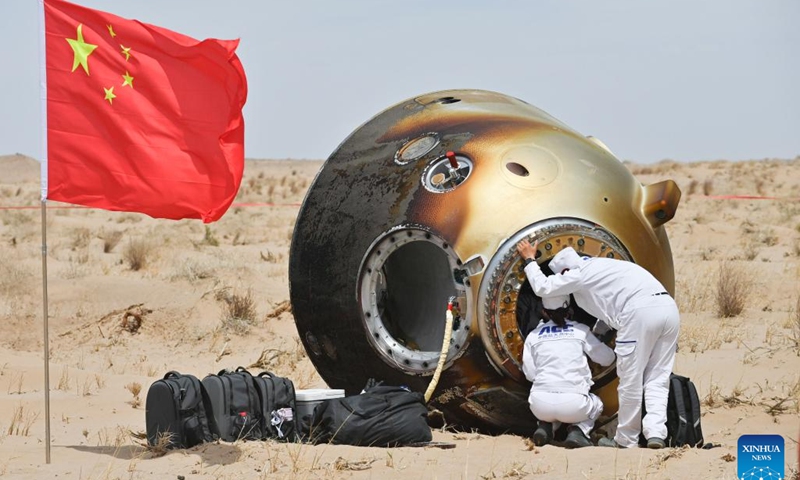Shenzhou-19 return capsule touches down, marking the complete success of space mission

The return capsule of the Shenzhou-19 crewed spacecraft, carrying taikonauts Cai Xuzhe, Song Lingdong, and Wang Haoze, touched down at the Dongfeng landing site in North China's Inner Mongolia Autonomous Region on 13:08 pm on Wednesday, marking the complete success of the mission.
The three taikonauts are in good health, according to the China Manned Space Agency (CMSA).
The Shenzhou-19 was successfully launched on October 30, 2024. During the mission, Chinese taikonauts completed three spacewalks and conducted six payload operations. They set a world record for the longest single spacewalk by a taikonaut — at nine hours — and broke the national record for the most spacewalks performed by a Chinese taikonaut.
According to CMSA, the three taikonauts spent 183 days in orbit, completing tasks such as the installation of space debris protection devices for the space station, multiple cargo transfer missions, and carrying out installation, commissioning, inspection, maintenance, and repair of both internal and external equipment. These efforts contributed valuable data and experience for the station's long-term, stable operation.
While in orbit, the crew, working closely with ground-based researchers, conducted a wide range of space science experiments and tests in fields such as microgravity physics, space materials science, space life sciences, aerospace medicine, and aerospace technology.
Faced with a substantial extravehicular workload, Chinese taikonauts demonstrated outstanding professionalism and technical skill, Wang Yanan, chief editor of Aerospace Knowledge magazine, told the Global Times.
The tasks performed during spacewalks demand exceptional precision and meticulous attention to detail, and successfully completing such extended extravehicular activities is a remarkable achievement, said Wang, "This underscores the formidable teamwork and resilience of the Chinese taikonaut corps."
Wang added that the achievement also reflects China's strong confidence in its spacesuit design and technology, which are engineered to withstand prolonged exposure to the harsh environment of space.
Wang noted the Shenzhou missions have evolved into a highly stable and routine operation. "Many tasks are continuous, with experiments unfinished by Shenzhou-19 seamlessly passed to Shenzhou-20. Completed experiments are returned to Earth, while new experimental equipment is launched, ensuring a smooth transition within a cohesive work team."
As time progresses, such updates may become increasingly routine to the public, said Wang.